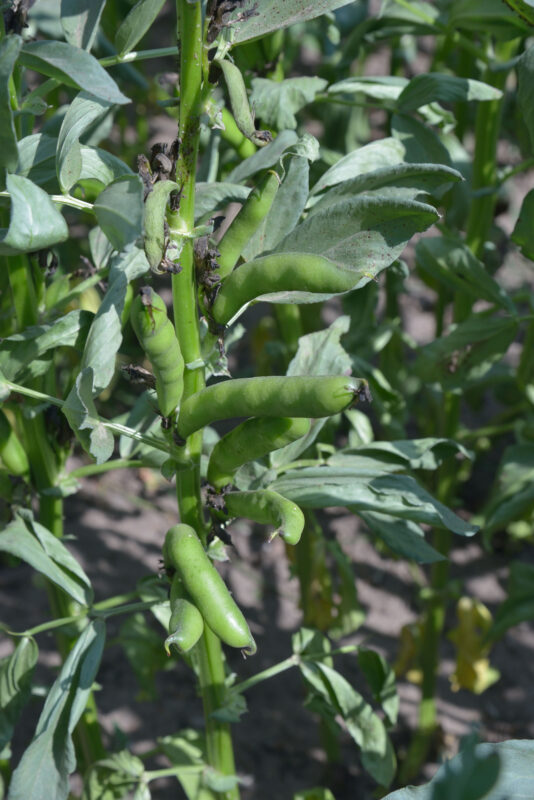This guide covers all the factors to consider when selecting the perfect location, suitable soil conditions, companion planting opportunities, and care tips for a successful sweet potato harvest.
Understanding Sweet Potatoes

Before we delve into the specifics of planting locations, let’s take a moment to recognize what sweet potatoes are and their growing needs. Native to Central and South America, sweet potatoes (Ipomoea batatas) thrive in warm climates and require a long growing season. These tubers prefer well-drained, nutrient-rich soil and plenty of sunlight, typically requiring at least six to eight hours of direct sunlight each day.
Understanding the basic biology and growth requirements of sweet potatoes is crucial for selecting the ideal planting site. Neglecting any of these needs can lead to a disappointing harvest.
Choosing the Right Location

Sunlight Requirements
One of the most critical factors to consider when determining where to plant sweet potatoes is sunlight. Sweet potatoes thrive in full sun, which means they need at least six to eight hours of direct sunlight each day. Look for a spot in your garden that receives ample sunlight without the shadow of trees, fences, or buildings blocking it.
Avoiding Frost Risk
Sweet potatoes are sensitive to frost and thrive in warm conditions. It’s essential to choose a location that warms up quickly in the spring and is not prone to late frosts. For many regions, this means planting in a southern-facing area or against a heat-retaining structure like a wall or fence.
Wind Protection
While sweet potatoes can endure heat, strong winds can damage their delicate vines. Consider planting them in a location that receives some wind protection or utilizing companion plants or single-row planting to shield them from the harshest gusts.
Soil Conditions

Drainage is Key
Sweet potatoes require well-drained soil. Waterlogged conditions can lead to rot and disease, ultimately harming plant health. Ideally, you should find well-aerated soil that drains quickly. If your garden has heavy clay soil, consider creating raised beds, which will improve drainage and provide the warmth sweet potatoes need.
Soil pH Levels
The optimal pH range for sweet potatoes is between 5.8 and 6.2. Conducting a soil test can help you understand your soil’s pH. If your soil is too acidic, you can amend it with lime; if it’s too alkaline, adding sulfur can help balance the pH level.
Nutrient-Rich Soil
Sweet potatoes are hungry plants, thriving in nutrient-dense soil. Prior to planting, it’s beneficial to enrich the soil with organic matter such as compost or well-rotted manure. This not only provides essential nutrients but also improves soil structure and moisture retention.
Planning Your Planting Layout

Row Spacing
When deciding where to plant sweet potatoes, consider how you want to arrange them in your garden. Sweet potatoes should be planted in rows spaced approximately 3 feet apart. This allows their sprawling vines to have ample space to grow, minimizing competition for nutrients and sunlight.
Planting Depth
Typically, slips (the young shoots from sweet potato tubers) are planted 4 to 6 inches deep. Ensure that the location allows for this depth without hitting any rocks or debris that could hinder growth.
Companion Planting

An insightful aspect of where to plant sweet potatoes revolves around companion planting. Certain plants can enhance the growth of sweet potatoes, while others may inhibit growth or attract pests.
Companion Plants that Benefit Sweet Potatoes
Beans: Planting beans alongside sweet potatoes can fix nitrogen in the soil, benefiting the nutrient uptake of both.
Coral Bells: This perennial plant provides cover, preventing weeds around your sweet potatoes while enhancing soil moisture retention.
Corn: Planting corn near sweet potatoes can provide natural support for the vines, allowing them to twine upwards.
Plants to Avoid
On the flip side, there are certain plants that sweet potatoes do not fare well with. These include:
Potatoes: They belong to the same family and share similar nutrient requirements, leading to competition in the soil.
Squash: This sprawling plant can compete heavily with sweet potatoes for resources and space.
Preparing the Soil
Tilling the Soil
Once you have chosen the suitable location based on sunlight, drainage, and compatibility with companion plants, you’ll need to prepare the soil. Tilling the garden bed to a depth of about 12 inches is recommended. This breaks up hard-packed soil and ensures that the sweet potato vines can spread their roots without hindrance.
Amending the Soil
As mentioned earlier, incorporating organic matter is key. About two to four inches of compost or well-rotted manure can be mixed into the tilled soil. This enriches the soil and gives sweet potato slips a nutrient boost right from planting.
Planting Sweet Potatoes
Timing is Everything
Timing your planting can be critical. Generally, sweet potatoes should be planted about two to four weeks after the last frost date in your area. This gives the soil time to warm up, which sweet potatoes need to grow healthily.
How to Plant Slips
Start by digging a hole sufficient enough to accommodate the slip (about 4 to 6 inches deep).
Place the slip in the hole, ensuring that nodes are covered.
Space each slip approximately 12 inches apart to allow enough room for growth.
Caring for Your Sweet Potatoes Post-Planting
Watering Routine
Post-planting, consistent watering is essential, especially during the first few weeks as the slips establish. Sweet potatoes prefer evenly moist soil, but they are also drought tolerant once established. Aim to water deeply but infrequently, allowing the top layer of soil to dry out between watering sessions.
Fertilization
While sweet potatoes don’t typically require heavy fertilization if planted in rich soil, they can benefit from a balanced fertilizer application during their growing period. Look for fertilizers that are lower in nitrogen but higher in phosphorus and potassium to encourage strong root development.
Weed Management
Weeds can compete with sweet potatoes for nutrients and water. Regularly check for weed growth, especially in the early stages of your plants. Hand-pulling weeds is often recommended to avoid damaging sweet potato roots.
Harvesting Sweet Potatoes

As your sweet potato plants grow, you’ll notice their sprawling vines taking over the space. After about 90 to 120 days, it will be time to harvest. This typically occurs in late summer to early fall when the leaves begin to yellow.
Signs of Readiness
Look for the following indicators that your sweet potatoes are ready for harvest:
The vines begin to die back or yellow.
The plant stops growing upward, and the leaves start turning brown.
Harvesting Technique
Digging up sweet potatoes requires some care to avoid bruising the tubers. Using a garden fork is often the best method:
Gently loosen the soil around the base of the plant.
Carefully lift the tubers from the soil.
Brush off excess dirt without scrubbing, as this can damage the skin.
Curing Your Sweet Potatoes
After harvesting, curing sweet potatoes in a warm, humid environment for about two weeks can enhance their flavor and increase shelf life. Store them in a cool, dark place afterward.
Conclusion
Planting sweet potatoes can be an incredibly rewarding experience, offering not only a delicious crop but also the satisfaction of nurturing and growing your food. By carefully selecting where to plant your sweet potatoes, considering sunlight, soil conditions, and companion planting strategies, you can set the foundation for a bountiful harvest.





